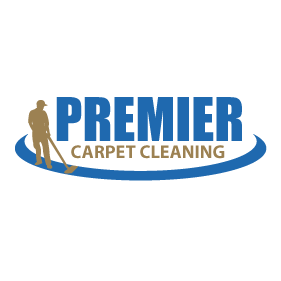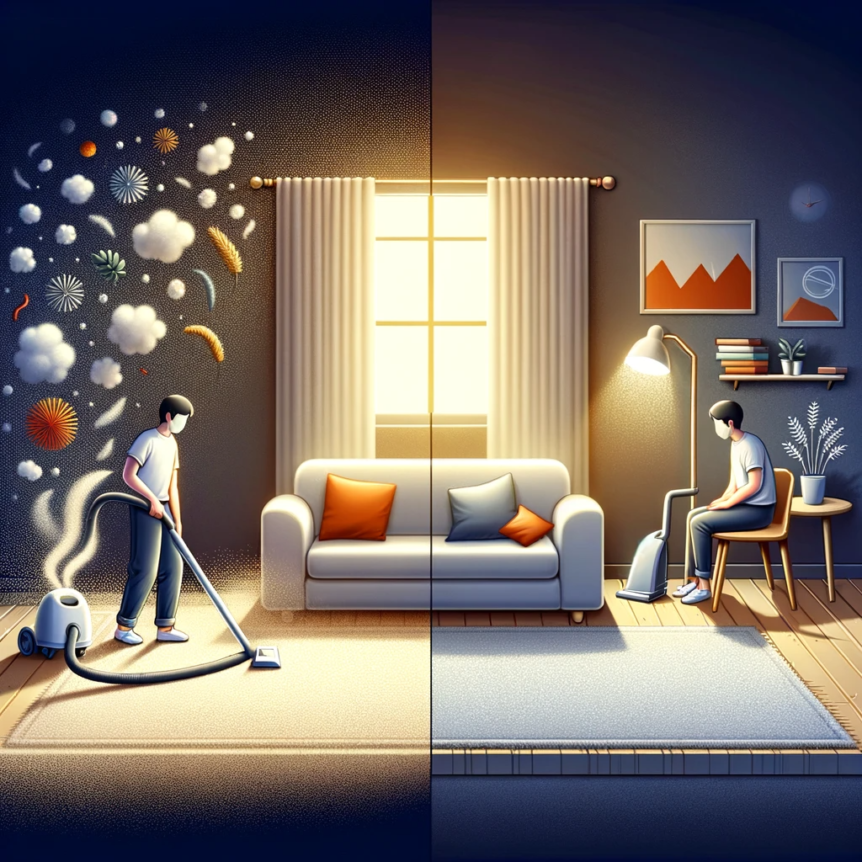Could carpet cleaning trigger allergies? Some ponder whether this routine household task might worsen allergy symptoms, especially for individuals sensitive to dust and allergens. Dust mites and tiny bugs in carpets and furniture significantly concern people with allergies and often contribute to ‘dust mite’ asthma. This common concern prompts questions about the impact of cleaning on health.
Some worry that cleaning machines could exacerbate asthma symptoms like wheezing and coughing. However, there’s hope. Newer and improved cleaning methods, such as eco-friendly and non-mechanical approaches like hot water extraction, appear promising.
Despite these advancements, the link between carpet cleaning and allergies remains a significant concern. In this blog, we aim to explore safe ways to clean carpets.
How Carpet Cleaning Can Cause Allergies
-
Dust mites
Dust mites are common triggers for allergies, especially when cleaning carpets. These tiny creatures live all around us, even inside your carpets. They lay eggs, and their babies eat up dead skin, pollen, and other yucky stuff in your carpets.
You’re shaking up these little bugs when you start cleaning, especially with a vacuum. That makes their poop and body parts fly into the air. Breathing in these bits can cause allergies in sensitive people, making them sneeze, itch, get watery eyes, and have trouble breathing.
-
Residual Chemicals from Cleaning Agents
Some conventional carpet cleaning agents contain harsh chemicals that, if not properly rinsed or removed during the cleaning process, can leave residues in the carpet fibers.
These residues may emit volatile organic compounds (VOCs) that can irritate the eyes, nose, and throat, leading to allergic reactions or respiratory discomfort in sensitive individuals.
-
Pet Hair and Dander
Another cause of allergies during carpet cleaning is pet hair and dander. Even if you’re not allergic to your furry friend, their dander—a mix of skin cells shed by pets—can cause allergies in your loved ones.
This dander often lands on carpets and upholstery. When pets groom themselves, they shed these tiny skin cells, which settle on carpets. While the individual might not be allergic to the pet’s fur itself, these dander particles can trigger allergic reactions when disturbed during cleaning, especially for those sensitive to pet allergens.
-
Pollen
Indoor plants, whether living or dried flowers, release pollen. This pollen finds its way into carpets, and using an old vacuum can disperse it further. The fine particles settle and become airborne with each step, posing a significant risk for those susceptible to allergies.
-
Mold and Mildew Growth
Have you ever noticed a damp smell after cleaning your carpets? That’s a potential breeding ground for mold and mildew. These fungi can start thriving if your carpets aren’t dried properly after cleaning.
When disturbed during subsequent cleanings, they release spores into the air, triggering allergies and possibly worsening asthma symptoms for those sensitive to them.
-
Poor Ventilation
Good airflow is crucial when cleaning carpets. Without it, allergens, dust, and cleaning chemicals hang indoors longer. This lingering mess increases the odds of setting off allergic reactions.
Ways of Preventing Allergy When Cleaning
To avoid triggering allergic reactions and health issues while cleaning carpets, consider these preventative measures:
-
Opt for a Vacuum Cleaner with an Allergy Filter or Hand Brush Attachment:
Vacuum cleaners do great at pulling dust and allergens from various surfaces, including pet hair. However, certain vacuum types might inadvertently release these allergens back into the air.
Consider getting a vacuum equipped with an allergy filter to boost cleaning efficiency. This specific filter is designed to capture smaller particles and allergens, ultimately improving the air quality and reducing allergic reactions during and after your cleaning routine.
-
Make Use of Steam Cleaning
Consider steam cleaning as it uses high-temperature steam to kill dust mites, bacteria, and allergens in carpets. The heat effectively sanitizes the carpet fibers, reducing the presence of allergens without the use of chemicals.
-
Brush and Groom your Pets
Make it a habit to groom your pets regularly to control shedding. Use a slicker brush or comb to remove loose fur and keep it in check. Consider using specific flea shampoos designed to eliminate fleas and their eggs effectively.
-
Make Use of Environmentally Friendly Cleaning Solutions
Choose environmentally friendly or green cleaning products when cleaning carpets. These solutions are formulated with natural ingredients and fewer harsh chemicals, reducing the risk of triggering allergic reactions and minimizing environmental impact.
-
Seek Professional Carpet Cleaning Services
Consider hiring professional carpet cleaners specializing in eco-friendly methods and using non-toxic cleaning solutions. Professional cleaners have expertise handling various carpet materials and can effectively remove allergens without causing health issues.
This ensures a thorough cleaning process that minimizes allergic reactions and promotes a healthier indoor environment.
Conclusion
While keeping your carpets clean is vital for a tidy home, it can pose challenges for those sensitive to allergens. Dust mites, cleaning residues, pet hair, pollen, mold, and poor ventilation can trigger allergies during the cleaning process. If carpet cleaning overwhelms or worsens allergy symptoms, seeking professional carpet cleaning services with eco-friendly practices is a wise option.
For safe and effective carpet cleaning solutions for your home, trust Premier Carpet Cleaning. Get in touch with our team of experts today and schedule your carpet cleaning service!

